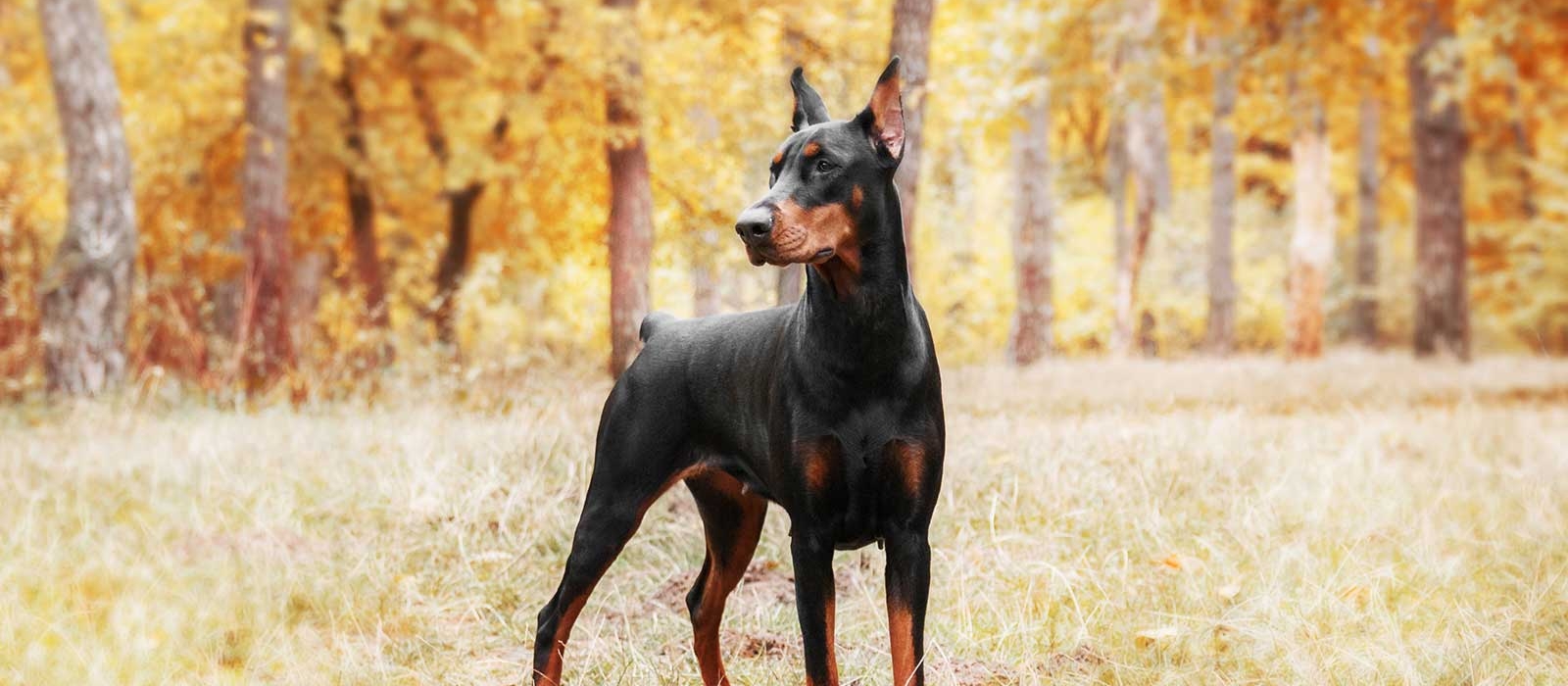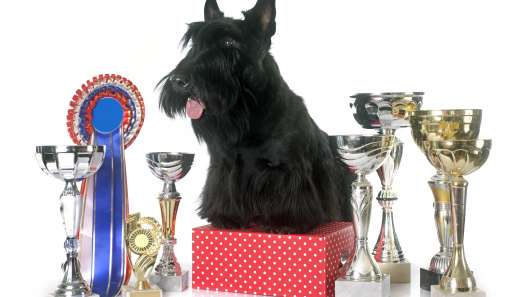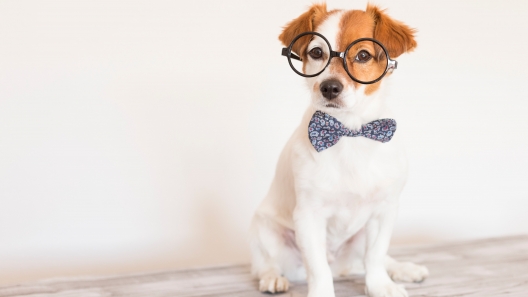-
Activity Level:
high
-
Shedding Level:
low
-
Grooming Level:
low
-
Trainability:
moderate
-
Good for Novice Owners:
moderate
-
Adaptability:
moderate
-
Kid/Pet Friendly:
sometimes
-
Prey Drive:
moderate
-
Watchdog:
very alert
- Average Size: Large
- Average Lifespan: 10-12 years
- Registered?: aca, akc
Doberman Pinscher Dog Breed Information
Overview
Temperament
Adaptability
Health
Owner Experience
Grooming
Activity Level
Size
Life Span
Did You Know?
The Doberman Pinscher is one of the dog breeds that make good guard dogs. In fact, they are known as one of the most effective guard dogs in the world. The Doberman Pinscher was first bred by a man named Louis Dobermann, a German tax collector around 1900 who wanted a guard dog that was also a suitable companion.
The Doberman breed was created with a melting pot of different breeds that include the Old Shorthaired Shepherd, Rottweiler, Black and Tan Terrier, and the German Pinscher, among others. The “Tax Collector’s Dog” quickly gained an international reputation as a popular working dog and guard dog.
There was a time when Dobermans were bred with the intention of creating an aggressive breed, which led to a reputation that still precedes them. Once bred for the sole purpose of being a watch or protection breed, today’s Dobermans are bred with more versatility in mind.
The AKC recognized the Doberman Pinscher in 1908 as a member of the Working Group and they are still one of the most popular working breeds. Today, the Doberman can be found as a loyal family companion and working as search and rescue dogs, military dogs, police dogs, therapy dogs, and service dogs. They are even one of the popular show dog breeds and are often found competing in dog sports.
The Doberman may grow into a large, powerful dog with an intimidating reputation, but they are loving and affectionate with their families. In fact, one of the facts about Doberman Pinschers is that they are extremely affectionate towards their owners.
They tend to get along well with children, dogs, and other pets in the family. They are protective and are initially suspicious of strangers, but they tend to warm up once introduced as long as they are well-socialized.
Because they are protective and vigilant watchdogs, a Doberman Pinscher will bark to alert you. But, they do not tend to bark a lot unless they have been trained into it or are poorly socialized. In addition to ongoing socialization, you can also train your dog to stop barking early on to keep it from becoming a nuisance.
Doberman Pinschers are moderately adaptable dog breeds. Although they can adapt to smaller homes if enough time is dedicated to giving them the exercise, attention, and mental stimulation they need every day, their large size and high energy level can be an obstacle in small living spaces.
They are best suited to homes with enough room for them to move around and fenced yards where they can run. They are sensitive to heat. Their short coat also does not provide much insulation from the cold, so they may need some winter dog products to stay warm while out on walks when temperatures drop.
As a protective and affectionate dog that bonds closely with their families, Dobermans do not like to be left alone for long periods of time. They also get bored easily and can become destructive if they are left on their own. This is one of the classic signs your dog isn’t getting enough exercise or mental stimulation.
Potential health concerns to be aware of in a Doberman Pinscher include hypothyroidism, albinism, von Willebrand’s disease, hip dysplasia, progressive retinal atrophy, and dilated cardiomyopathy. Good breeding practices make a big difference in the health of puppies.
Reputable breeders will screen their dogs to avoid passing preventable issues to puppies. Make sure you are asking about the health and genetic history of both parents. You can also ask about any health tests or clearances that have been done.
As a large, barrel-chested breed, the Doberman Pinscher is at risk for bloat. Because bloat in dogs is life-threatening if the stomach flips (gastric torsion), it’s important to know how to reduce the risk and what symptoms to look for so you can get help immediately.
The Doberman Pinscher is one of the smartest dog breeds in the world, so it is no surprise that they pick up on things quickly. Although a Doberman can be eager to please, they also tend to be strong-willed. Once you have a strong bond with them and their respect, they will strive to please you provided expectations are clear and consistent during training.
Training classes or working with a professional trainer are recommended, even for experienced owners. If not socialized well or trained properly, these dogs can become destructive, unmanageable, and aggressive. Poor socialization and lack of training are some of the most common causes of aggression in dogs, so it’s important to get this right early on for any dog breed.
Doberman Pinschers have short coats that shed a little year-round. Weekly brushing or brushing a few times a week along with the occasional bath is usually enough to keep their coat healthy and looking great.
In addition to coat care, you also need to take care of your Doberman Pinscher’s nails, ears, and teeth. Cutting nails once or twice a month keeps nails from growing too long. Checking ears weekly and carefully cleaning them as needed can help prevent ear infections.
Ideal dental care for dogs starts with daily tooth brushing and cleanings at the vet when needed. Starting a good dental care routine early and maintaining it consistently can help prevent painful dental diseases later in life.
Doberman Pinschers are high-energy dogs that are very energetic, very playful, and also very hardworking. They require a lot of exercise every day and need a job to do to be happy and healthy. Daily walks plus playtime, time to run, and other activities are usually enough, but Dobermans will often be up for more activity if you are.
They are athletic and versatile dogs, so once puppies finish growing and developing, you can try a lot of things with them. Playing frisbee, running, hiking, swimming, and more are all things you and your Doberman might enjoy together. You can also train them for dog sports even if you don’t plan on entering competitions. Doberman Pinschers tend to excel at agility, tracking, obedience, rally, fly ball, dock diving, and more.
Fully-grown Doberman Pinschers usually stand 24-28 inches tall and weigh 60-100 pounds.
Doberman Pinschers generally live for 10-12 years on average.
During World War II, Doberman Pinschers were essential military dogs and became known as “Devil Dogs”. The U.S. Marine Corps Dobermans of the Pacific were dedicated to the war effort and increased the fame and popularity of the breed.
Twenty-five military dogs died during the battle for Guam. There is a life-size statue of a Doberman in the National War Dog Cemetery located on the Orote Point US Naval Base in Guam. It’s a permanent monument with a plaque that reads “Always Faithful” and serves as a memorial to honor the military dogs buried there.








